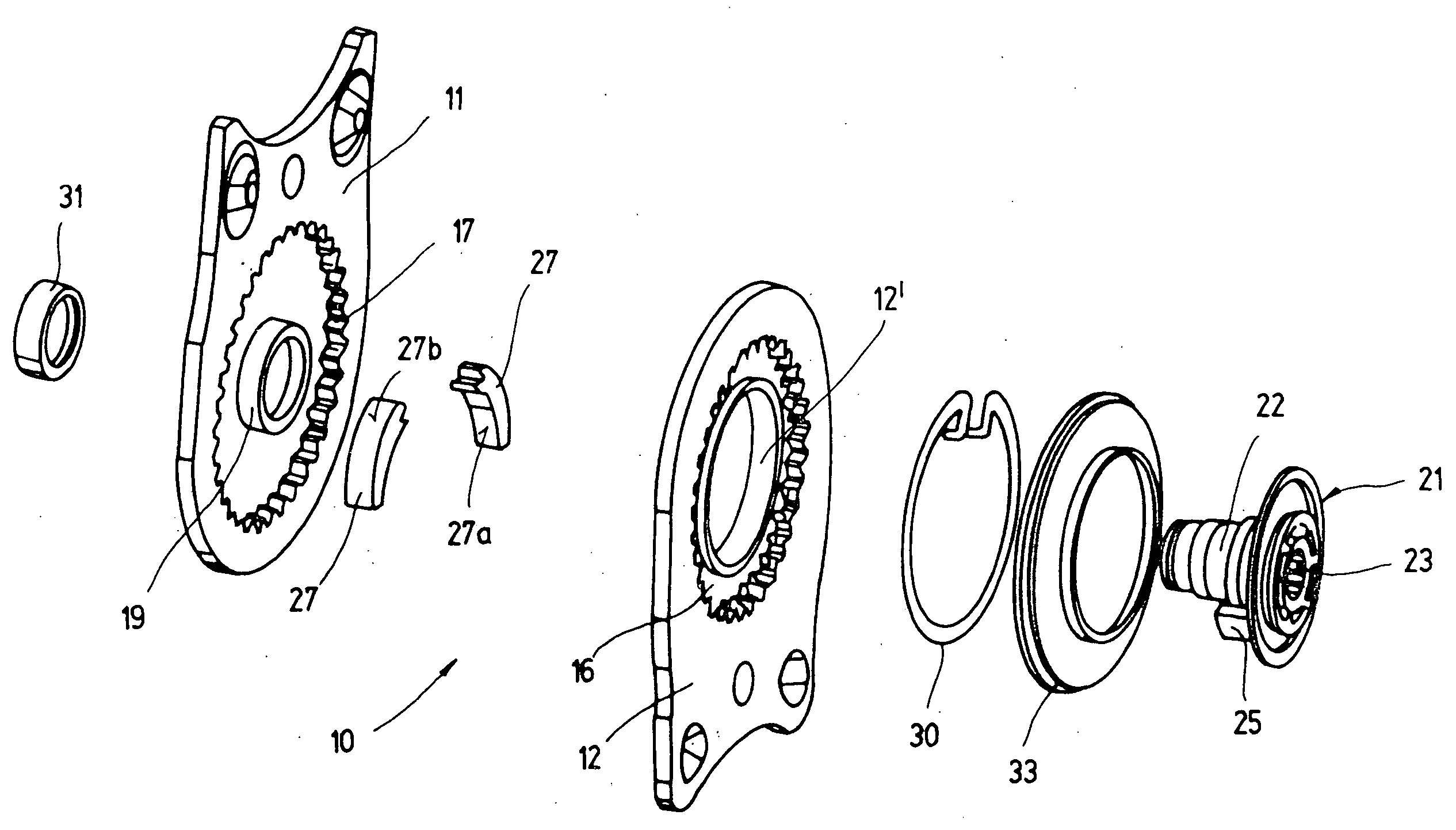Fitting for a vehicle seat
a vehicle seat and seat technology, applied in the direction of movable seats, basic electric elements, couplings, etc., can solve the problems of inability to produce in a sufficiently smooth manner under industrially expedient process conditions, and achieve the effect of reducing frictional losses, improving fitting efficiency, and low friction
- Summary
- Abstract
- Description
- Claims
- Application Information
AI Technical Summary
Benefits of technology
Problems solved by technology
Method used
Image
Examples
Embodiment Construction
[0022]A vehicle seat 1 for a motor vehicle has a seat part 3 and a backrest 4 which can be adjusted in its inclination relative to the seat part 3. A hand wheel 5 is on one side of the vehicle seat 1 and can be actuated manually in order to adjust the inclination. The hand wheel 5 rotates a drive shaft (not shown) which is arranged horizontally in the transition region between seat part 3 and backrest 4. On both sides of the vehicle seat 1, the drive shaft engages in a rotationally fixed manner in a respective fitting 10. The backrest 4 is connected to the seat part 3 by way of the two fittings 10. Of the two illustrated embodiments of the fitting 10, the common features are described first.
[0023]The fitting 10 is designed as a geared fitting in which a first fitting part 11 and a second fitting part 12 are connected to each other for adjustment and fixing via a gear designed as an eccentric epicyclic gear (which is preferably self-locking at least in the case of one of the two fitt...
PUM
 Login to View More
Login to View More Abstract
Description
Claims
Application Information
 Login to View More
Login to View More - R&D
- Intellectual Property
- Life Sciences
- Materials
- Tech Scout
- Unparalleled Data Quality
- Higher Quality Content
- 60% Fewer Hallucinations
Browse by: Latest US Patents, China's latest patents, Technical Efficacy Thesaurus, Application Domain, Technology Topic, Popular Technical Reports.
© 2025 PatSnap. All rights reserved.Legal|Privacy policy|Modern Slavery Act Transparency Statement|Sitemap|About US| Contact US: help@patsnap.com



